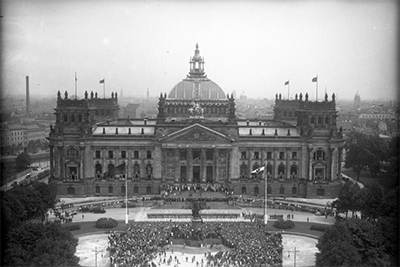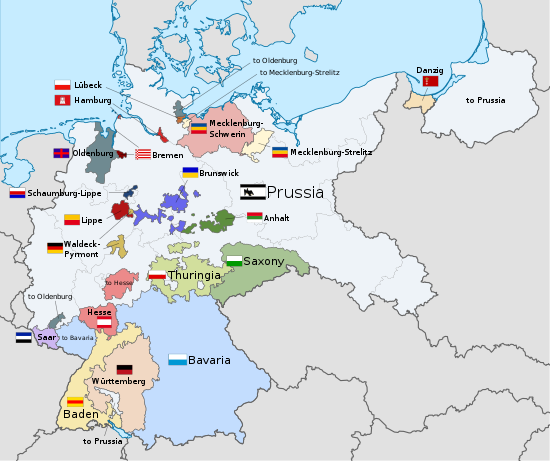The Weimar Republic: Germany's Interwar Government
Part 2: Trouble in the Republic The Weimar Constitution outlined a government led by two parliamentary houses, the Reichstag and the Reichsrat. Members of both of these houses served four-year terms. Leading the Reichstag was the Chancellor, who was appointed by the President, the nominal head of government. 
In the daily doings of government, the President filled the role of a chief executive, making treaties and alliances and serving as commander-in-chief of the armed forces. The President also had the power to submit any Reichstag-enacted law to a public referendum and even to dissolve the Reichstag. In the spirit of checks and balances, the President did not have overall power, depending on the Reichstag to make the laws, and served a term of seven years; however, the President could assume the mantle of total authority if a state of emergency existed. All men and all women 20 years of age and older could vote for these members of government. This was the first time that German women could vote. Among the rights guaranteed to the German people by the 181-article Weimar Constitution were these:
In addition, workers had the right to insist on a workday of no more than eight hours and were allowed both trade union membership and the right to conduct collective bargaining. This led to the development of a number of work councils, to foster representation of workers across the economic spectrum. The Weimar system split the country into 18 states called Länder. Each of those had its own local government, which could send its members to the Reichsrat. National law, however, superseded Länder law. 
Next page > Government Takeover > Page 1, 2, 3 |
|
Social Studies for Kids
copyright 2002–2025
David White




